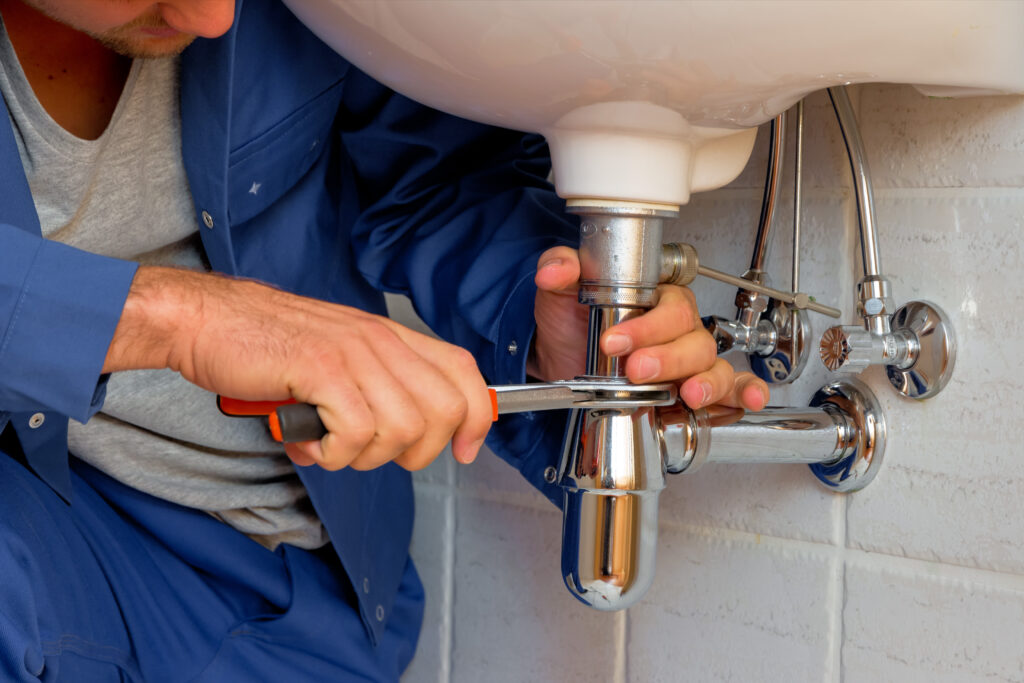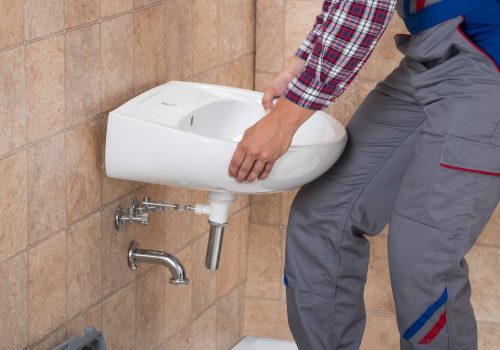We've discovered this article on The Future Of Plumbing: Trends And Technologies To Watch directly below on the internet and figured it made sense to relate it with you on this site.

Introduction
The plumbing industry is going through a transformative phase driven by technological innovations and growing problems for sustainability and efficiency. This post explores emerging patterns and technologies forming the future of plumbing.
Smart Pipes Systems
Incorporating smart modern technology into pipes systems makes it possible for remote monitoring, leakage detection, and automated upkeep. Smart sensors and IoT (Web of Points) gadgets enable house owners and plumbing professionals to keep track of water use and identify concerns in real-time, bring about more efficient source management and aggressive maintenance.
Water Performance Solutions
With increasing emphasis on water preservation, cutting-edge services are being created to decrease water waste in pipes systems. High-efficiency fixtures, greywater recycling systems, and smart watering controllers are amongst the modern technologies helping consumers minimize their water impact while keeping convenience and ease.
Sustainable Products
The change in the direction of sustainability includes plumbing materials, with a growing preference for green alternatives. Naturally degradable piping products, such as PEX (cross-linked polyethylene) and HDPE (high-density polyethylene), offer durability and resistance to deterioration without compromising ecological honesty.
Anticipating Upkeep
Anticipating maintenance methods leverage data analytics and machine learning formulas to prepare for and stop plumbing concerns before they take place. By analyzing historical data and performance metrics, predictive maintenance algorithms can recognize patterns and abnormalities, enabling positive treatments to prevent expensive fixings and interruptions.
Enhanced Truth in Plumbing
Increased Fact (AR) technology is transforming plumbing by offering specialists with real-time aesthetic support for fixing and repair work tasks. AR-enabled clever glasses or mobile applications overlay electronic information onto the physical atmosphere, helping plumbing professionals imagine pipeline formats, identify hidden leaks, and carry out repair services with precision.
Impact of 3D Printing
The introduction of 3D printing has actually introduced brand-new possibilities in producing plumbing elements. From custom-made components to elaborate pipeline installations, 3D printing permits rapid prototyping and on-demand manufacturing, lowering preparations and allowing higher customization in plumbing design.
Health And Wellness Qualities
In response to increased concerns for health and safety, plumbing components are integrating features such as antimicrobial surface areas, touchless procedure, and self-cleaning mechanisms. These innovations not only improve health yet also promote individual comfort and ease.
Hygiene-focused Fixtures
Touchless taps, self-sanitizing commodes, and antimicrobial surfaces are ending up being significantly common in property and commercial settings, minimizing the risk of bacterium transmission and advertising a cleaner, much healthier setting.
Water Quality Monitoring
Innovations in water high quality monitoring innovations enable house owners to check the pureness and safety and security of their water supply in real-time. Smart water top quality sensing units can identify contaminants, pH levels, and temperature variations, equipping users to take aggressive measures to make certain water safety.
Remote Plumbing Services
Remote diagnostics and virtual help are revolutionizing the way plumbing solutions are supplied. Through video clip conferencing and remote accessibility technologies, plumbing technicians can fix problems, give assistance for do it yourself repairs, and even execute remote examinations, using greater access and benefit to home owners.
Difficulties and Opportunities
While plumbing advancements hold tremendous pledge, they additionally existing difficulties such as data privacy concerns, governing conformity, and the requirement for labor force training. Attending to these obstacles requires collaboration in between industry stakeholders and regulative bodies to guarantee safe and accountable application of new innovations.
Governing Landscape
Governing frameworks play a critical role fit the adoption of pipes technologies, with standards and codes regulating every little thing from water effectiveness to product safety. As technologies continue to progress, governing bodies must adjust to ensure consumer protection and environmental stewardship.
Future Expectation
The future of plumbing is defined by proceeded development and integration with other sectors such as IoT, renewable resource, and structure automation. By embracing lasting methods, leveraging arising modern technologies, and prioritizing user-centric style, the plumbing market is positioned to resolve the developing needs of culture while decreasing its environmental footprint.
Verdict
To conclude, the future of pipes is specified by a merging of technology, sustainability, and user-centric layout. By accepting wise solutions, sustainable materials, and positive maintenance techniques, the pipes industry can enhance performance, advertise safety and security, and contribute to a much more sustainable future.
The Future of Plumbing: Trends and Innovations to Watch
Introduction to Future Plumbing Trends
The future of plumbing is being shaped by several key factors, including technological advancements, environmental concerns, and changing consumer expectations. These factors are driving the development of new products, services, and practices that enhance the efficiency, sustainability, and convenience of plumbing systems.
Key Trends and Innovations in Plumbing
Smart Plumbing Systems: The integration of smart technology into plumbing systems is transforming the way we manage water usage and detect issues. Smart leak detectors, automated water shut-off valves, and smart faucets are just a few examples of how technology is enhancing plumbing systems. These devices provide real-time data and remote control capabilities, allowing homeowners to monitor and manage their water usage more effectively. Water Conservation and Efficiency: With increasing concerns about water scarcity, there is a growing emphasis on water conservation and efficiency. Innovations such as low-flow fixtures, greywater recycling systems, and rainwater harvesting are becoming more popular. Plumbers are adopting these technologies to help customers reduce their water consumption and save on utility bills. Sustainable Materials: The use of sustainable materials in plumbing systems is gaining traction. This includes the adoption of recyclable and biodegradable materials, as well as the use of non-toxic and eco-friendly products. Sustainable materials help reduce the environmental impact of plumbing systems and promote long-term sustainability. Energy-Efficient Water Heaters: Advances in water heating technology are leading to the development of more energy-efficient systems. Tankless water heaters, solar water heaters, and heat pump water heaters are becoming more prevalent. These systems offer significant energy savings and reduce the carbon footprint of homes and businesses. Trenchless Technology: Trenchless technology is revolutionizing the way plumbing repairs and installations are conducted. This method allows for the repair or replacement of pipes without extensive excavation, minimizing disruption and reducing costs. Techniques such as pipe bursting and cured-in-place pipe (CIPP) lining are gaining popularity. Health and Safety: The focus on health and safety is driving innovations in plumbing systems. Touchless faucets and fixtures, antimicrobial materials, and improved water filtration systems are being developed to enhance hygiene and protect public health. Plumbers are adopting these innovations to meet the growing demand for safer and healthier plumbing solutions. Remote Diagnostics and Monitoring: The ability to diagnose and monitor plumbing systems remotely is becoming increasingly important. Remote diagnostic tools and sensors allow plumbers to identify issues and perform maintenance without the need for on-site visits. This enhances efficiency and reduces the need for costly emergency repairs. Impact of Future Trends on the Plumbing Industry
Enhanced Efficiency: The adoption of smart technology and energy-efficient systems will enhance the efficiency of plumbing systems. This will lead to reduced water and energy consumption, lower utility bills, and improved performance. Sustainability: The focus on sustainability will drive the development and adoption of eco-friendly plumbing solutions. This will contribute to the conservation of natural resources, reduction of waste, and protection of the environment. Improved Customer Experience: The integration of technology and innovative solutions will improve the customer experience. Homeowners will have greater control over their plumbing systems, access to real-time data, and the ability to manage their water usage more effectively. Increased Demand for Skilled Plumbers: The adoption of new technologies and materials will require plumbers to acquire new skills and expertise. There will be an increased demand for skilled plumbers who are knowledgeable about the latest trends and innovations. Cost Savings: The use of efficient and sustainable plumbing solutions will result in cost savings for both homeowners and businesses. Reduced water and energy consumption, lower maintenance costs, and fewer emergency repairs will contribute to overall affordability. Preparing for the Future of Plumbing
Stay Informed: Keep up-to-date with the latest trends and innovations in the plumbing industry. Attend industry conferences, participate in training programs, and engage with manufacturers to stay informed. Invest in Training: Ensure that you and your team are trained in the latest technologies and installation techniques. This will enable you to offer cutting-edge solutions to your customers and stay competitive in the market. Promote Sustainable Solutions: Highlight the benefits of eco-friendly and energy-efficient plumbing solutions to your customers. Educate them about the advantages of adopting sustainable practices and products. Leverage Technology: Embrace smart technology and remote diagnostic tools to enhance your services. Offer remote monitoring and maintenance options to provide added convenience and value to your customers. Collaborate with Manufacturers: Partner with manufacturers of innovative plumbing products to gain access to the latest solutions and technical support. This can also provide opportunities for joint marketing efforts. Focus on Customer Education: Educate your customers about the benefits and functionality of new plumbing technologies. Provide guidance on how to use smart systems and maintain sustainable plumbing solutions. Conclusion
The future of plumbing is being shaped by exciting trends and innovations that promise to enhance efficiency, sustainability, and convenience. By staying informed and embracing these changes, plumbers can provide superior services to their customers and contribute to a more sustainable future. The adoption of smart technology, sustainable materials, and energy-efficient systems will drive the evolution of the plumbing industry, creating new opportunities and challenges. By preparing for the future, plumbers can ensure their success in a rapidly changing market.

I recently found that post about 7 Plumbing Industry Trends You Need To Know when surfing around the search engines. Do you know somebody who is inquisitive about the subject? Why not share it. Kudos for being here. Revisit us soon.
Call